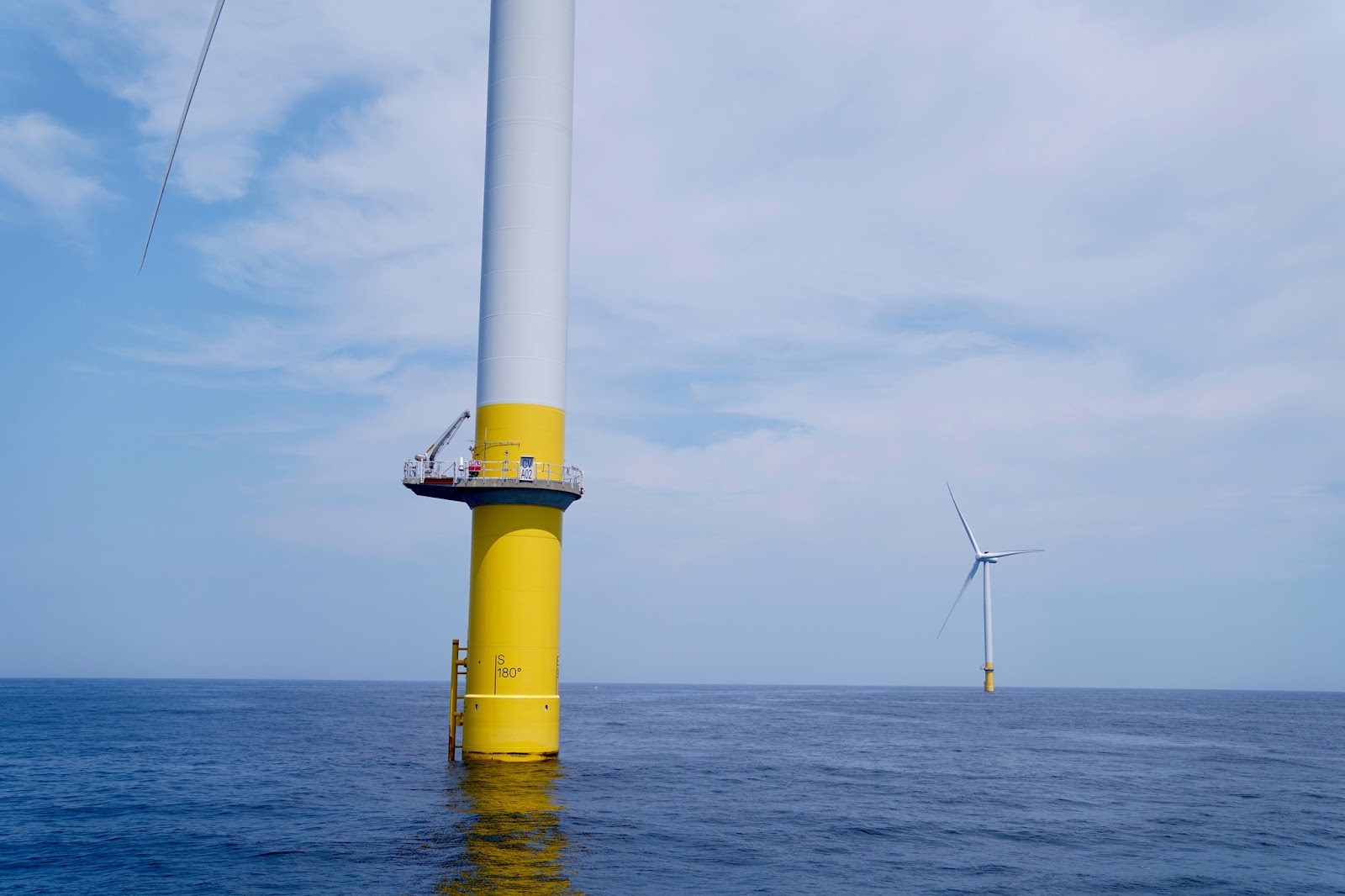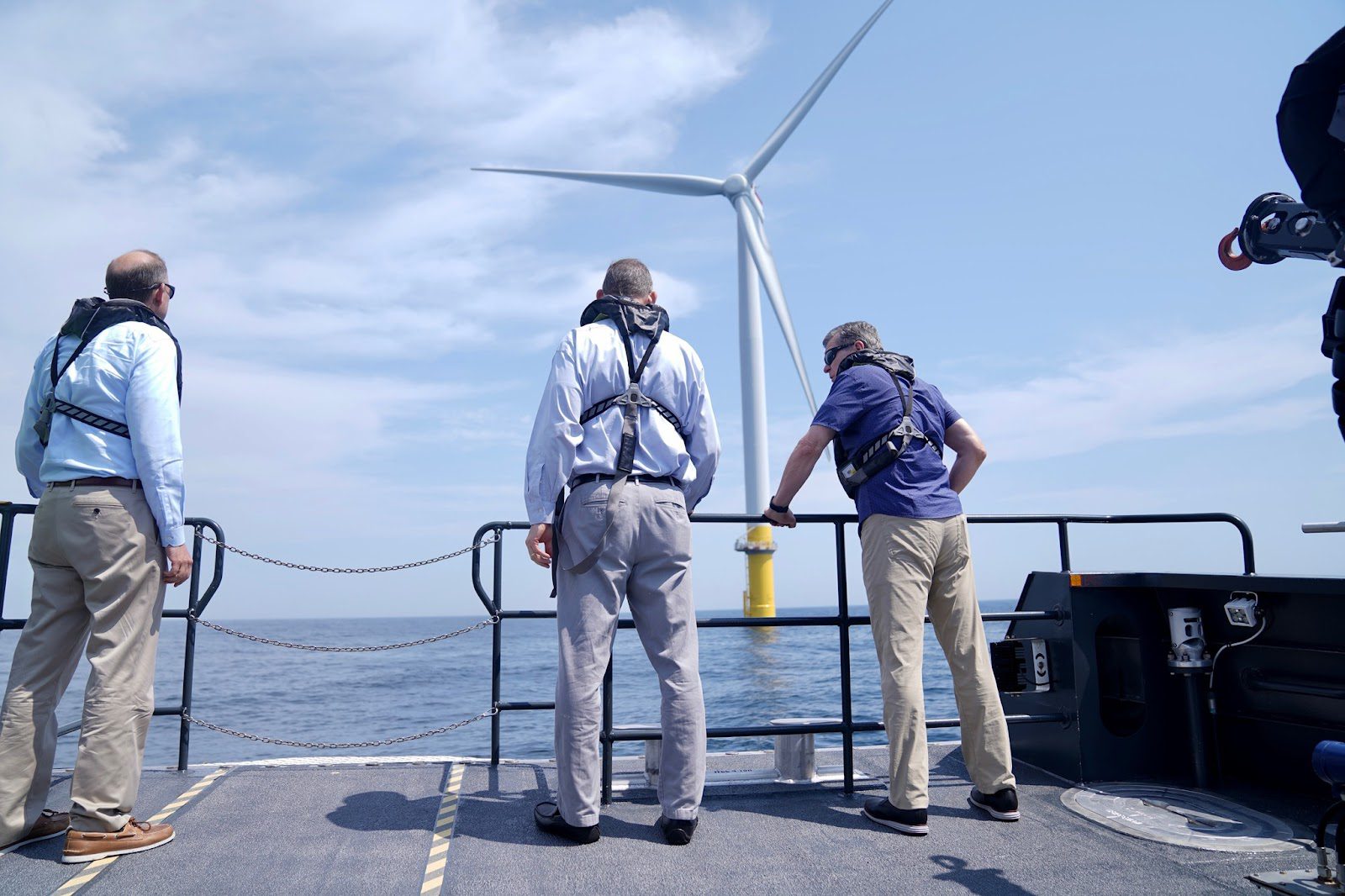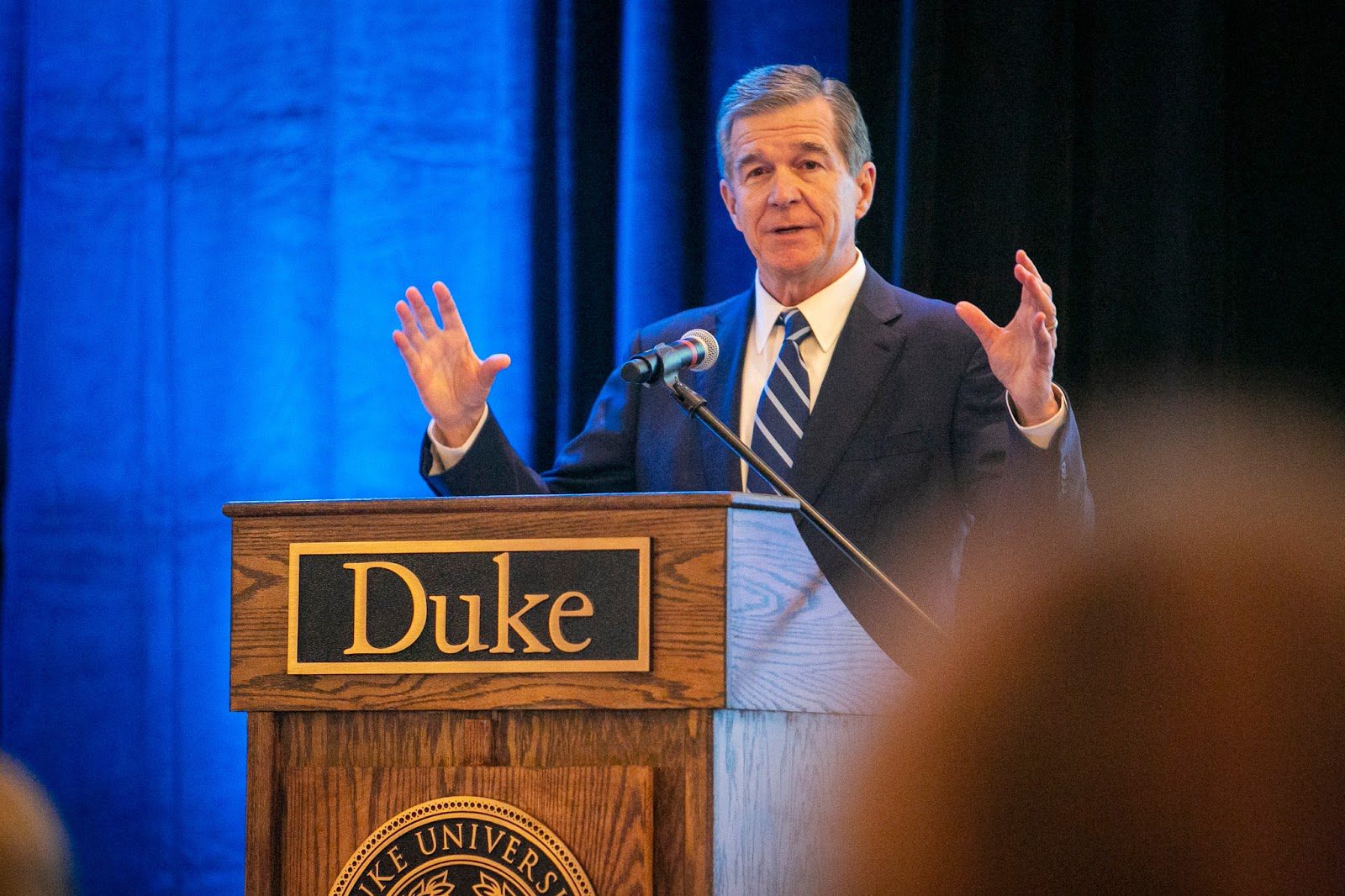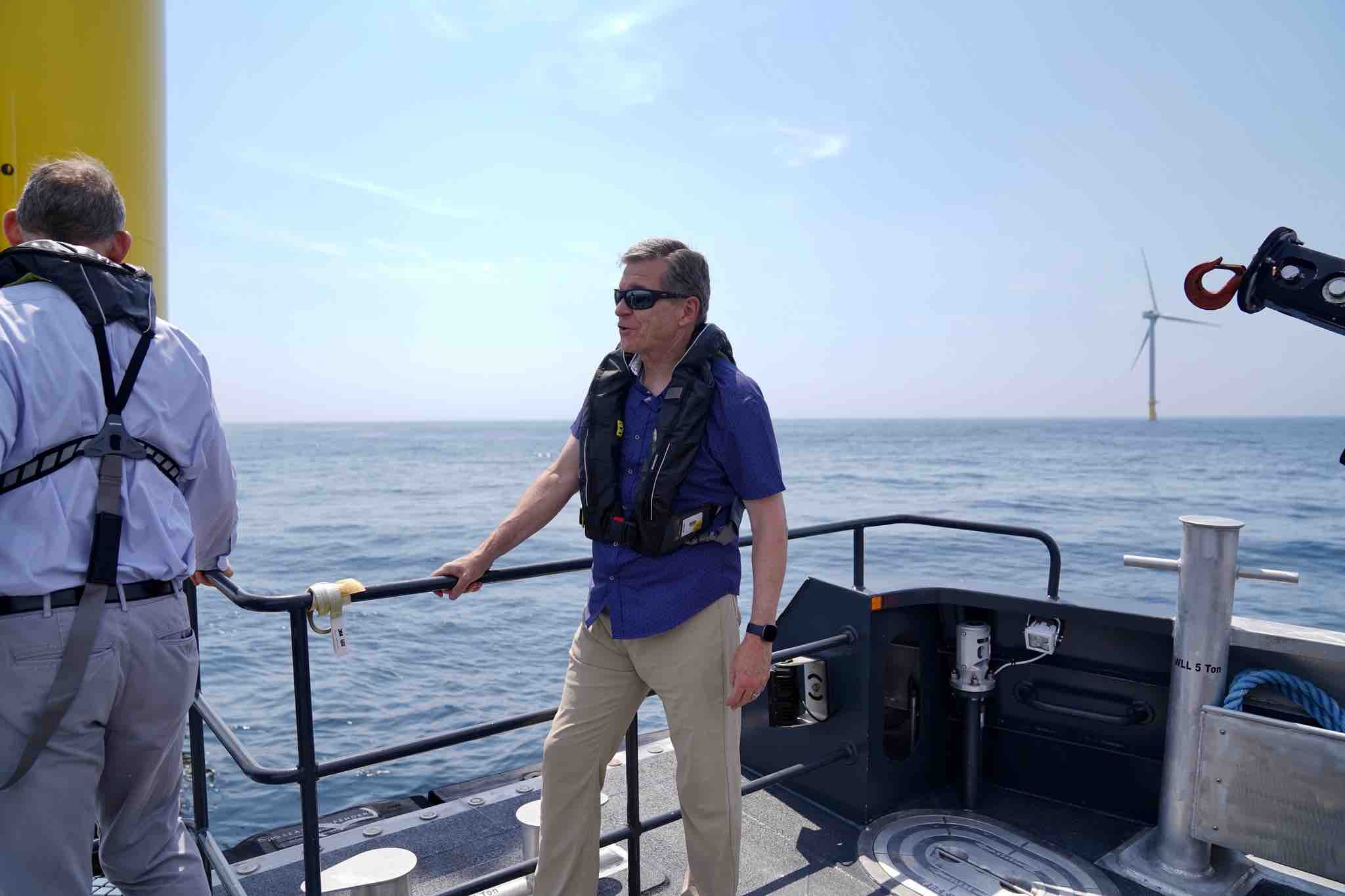The windy North Carolina coastline will forever be etched into history because of its role in the world’s first controlled powered flight, completed by Orville and Wilbur Wright in 1903. The Ohio brothers had a good reason to choose North Carolina’s Outer Banks for their famous flight. According to the National Park Service, the conditions were ideal because of “strong winds, tall sand dunes for launching, wide expanses of sandy beaches for soft landings, and isolation for privacy.”
Those strong winds still exist off North Carolina’s coast, and Gov. Roy Cooper intends to harness them as a crucial part of his renewable energy program. In August, Cooper met with board members of the North Carolina State Ports Authority to share his plans to bring offshore wind energy to the coast.

Photo Courtesy Governor Roy Cooper
As WECT reported, the governor “gave a passionate speech” about North Carolina’s potential to be one of the country’s leaders in offshore wind generation.
His plan is to attract $140 billion in investments and create tens of thousands of jobs for the state.
“The advantages for North Carolina are very clear here to start with,” Cooper said. “We have a bipartisan law in place that is going to require carbon reductions in our power sector. So, North Carolina is well positioned to take advantage of the offshore wind supply chain for the entire nation.”
According to WECT, one of Cooper’s goals is to put enough clean energy projects in place to help the state meet the president’s executive order of zero carbon emissions operations by 2050.
“Let’s move in to get those thousands of great paying jobs that the supply chain is going to create,” Cooper said. “We’re gonna have to get ahead of our competitors to do it.”
Cooper’s meeting with the Ports Authority followed some disappointing news for North Carolina, which wasn’t among the states selected by the U.S. Bureau of Ocean Energy Management (BOEM) for the latest round of offshore wind projects.
In a statement released on his website, Cooper called the BOEM’s decision “extremely disappointing” but that it “will not slow North Carolina’s momentum” in reaching its offshore wind energy goals as the state transitions to a clean energy economy.

Photo Courtesy Governor Roy Cooper
“The Biden-Harris Administration and North Carolina have outlined strong goals to increase offshore wind energy generation, and this decision jeopardizes both plans,” Cooper said. “North Carolina remains committed to becoming the nation’s leader in offshore wind energy and stands ready to work with the Bureau of Ocean Energy Management to identify alternative solutions to solve this problem.”
According to the governor’s office, North Carolina already has about 232,500 acres leased off its coast for offshore wind development.
In 2021, Cooper signed Executive Order 218, establishing offshore wind development goals — 2.8 gigawatts off the shoreline by 2030 and 8.0 GW by 2040. Cooper’s office estimates that achieving these goals would power about 2.3 million homes statewide by 2040 and create thousands of clean energy jobs.
Wind power has been an important part of Cooper’s clean energy agenda as governor. In March, he spoke at Duke University’s Winds of Change conference to tout offshore wind energy development as a key to the Tar Heel state’s clean energy future, WRAL reported. The challenge is finding the money to upgrade ports, enable power transmission, develop the supply chain, and build infrastructure.

Photo Courtesy Governor Roy Cooper
“These capital costs are so high, and for the first movers … they’re going to have a lot of difficulty getting that first step started without some federal funding or some state aid,” Mary Yang, a special advisor to commissioner Allison Clements with the Federal Energy Regulatory Commission, told WRAL.
That’s one of the reasons Cooper has been meeting with energy and government leaders to talk up North Carolina’s wind energy potential and attract investments.





